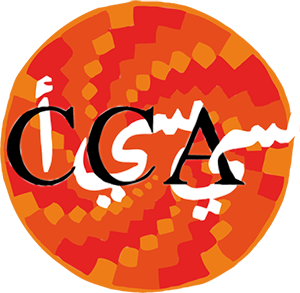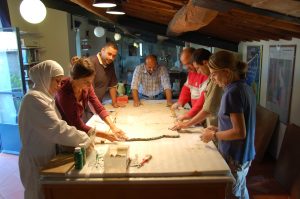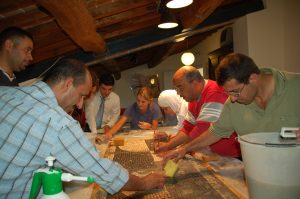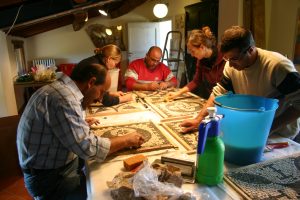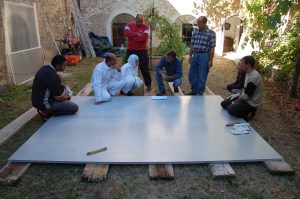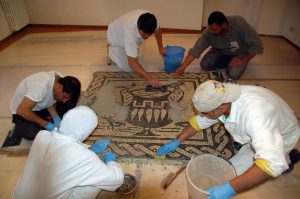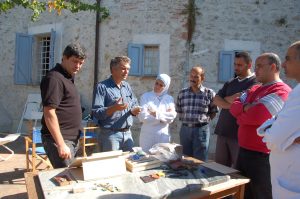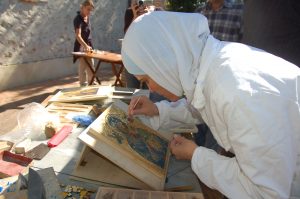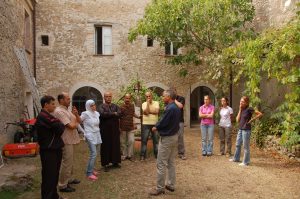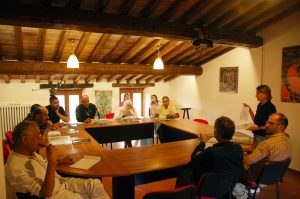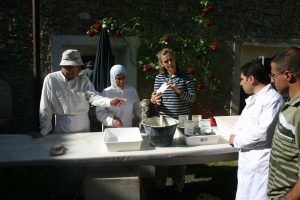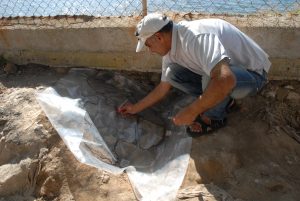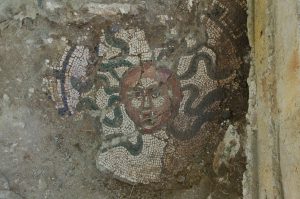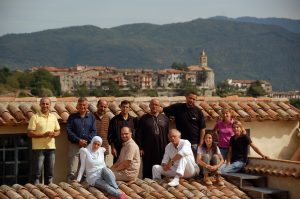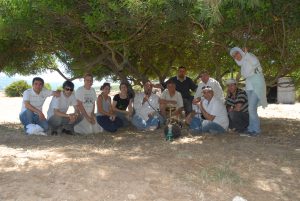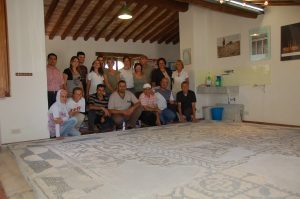Curriculum
MCC Syria 2011-2012 was articulated in theoretical lectures, laboratory conservation practice, and a number of other activities such as fieldwork and study visits.
Theoretical lectures
Lectures were delivered by CCA teachers and several international conservation experts (see “Faculty and Staff” section). A broad range of topics were covered with the aim of introducing ethical and theoretical principles of modern conservation, with special reference to the treatment of mosaics.
Lectures included:
– An introduction to the history of mosaic conservation and to conservation principles in general:
- The significance of cultural heritage
- History of mosaic conservation
- History of mosaic techniques
– Materials and techniques for mosaic conservation:
- Restoration techniques
- Lifting techniques
- Lime based mortars in conservation
- Chemistry for conservators
– An introduction to conservation management:
- Principles and methodologies for conservation planning
- Documentation
– International case studies illustrating examples of conservation interventions in the following areas:
- Lifting and repositioning
- In situ conservation
- Preventive consolidation
Laboratory practice
This focused on the treatment of an original Roman mosaic from the Villa del Quadraro, Rome, kindly made available by the Museo delle Terme of Rome. CCA’s laboratory assistants guided the participants through various phases of treatment, cleaning, reconstruction, reintegration and mounting on a new support.
Other activities
The course included several other activities such as study visits to archaeological and historic sites, fieldwork on an excavation in Sardinia and attendance at the 11th ICCM Conference in Morocco.
Several study visits, led by course instructors, integrated the theoretical lectures and were a chance for participants to increase their knowledge of ancient Roman art while exploring Italy. Weekends were spent in Rome, Florence and Naples, visiting important sites such as Hadrian’s Villa, Pompei, Herculaneum, and the medieval city of Rieti, where the course was held.
Participants learnt about in situ conservation and emergency intervention in Sardinia, at the Roman Villa of Sant’Imbenia (Alghero). In the course of a week, participants gained first hand experience of working conditions on site and of issues concerning the recovery and transport of archaeological mosaics.
As part of the course, students attended the 11th ICCM Conference on “Managing Archaeological Sites with Mosaics: from Real Problems to Practical Solutions”, in Volubilis and Meknes (Morocco), from October 24th to 27th 2011. This was an opportunity for participants to present posters on the latest projects they had been working on and to discuss them within an international professional network.
At the end of the course participants took a final exam and put their newly acquired skills into practice by elaborating a conservation plan for a lifted mosaic belonging to their museum. The plan was presented and discussed among colleagues and instructors.
